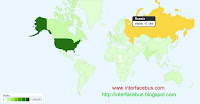
I was out looking at Digital TV's on-line, up-dating the
web sites listing for
CableCard. This is a
PCMCIA slot and PCMCIA card, a tuner card that can be inserted into a slot in the TV to replace a cable set-top box. Some TV descriptions indicate the term CableCard, while others indicate Digital Cable Ready [see below]. I was only able to find a few HDTV units from Hitachi which came with a CableCard slot. I see a few from Sony too. The CableCard allows the user to plug cable directly into a TV set without the need for a set-top box [STB]. CableCard slots may also be found on Digital Video Recorders [DVR]
Version 1 of CableCard was 'one-way' only so with out the cable decoder box things like 'pay-per-view' was unavailable. Version 2 released in June of this year should be fixing this problem [I have not yet reviewed it]. As of July 07 according to an FCC ruling; cable companies now have to supply set-top boxes that come with a removable CableCard. The ruling may bring CableCard back from the dead.
As far as PCs with a CableCard slot ~ forget it [for now]. CableCard interfaces are only available on Windows Vista machines and only with new OEM PC purchases. So you can't go to a store and purchase an up-grade to add CableCard, it has to be bundled with a new PC. Here's a quote;
"AMD's Digital Cable Tuner will only be available from PC manufacturers, and then only with a new Vista PC. There are no plans for support on Windows XP, nor are there any plans to sell the Digital Cable Tuner as a standalone product. "CableLabs has to know about every single system manufactured," ..... "They require full encryption and content protection, which means it's bound to Windows Media Center." HP has one: Digital Tuner-equipped m8010y.
Digital Cable Ready [DCR], this attribute describes a TV that incorporates a CableCARD slot to facilitate the reception of one-way digital cable content (which may include analog, digital, high-definition and/or premium programming) without the need for a set-top box. A CableCARD is typically provided for a nominal monthly fee by the cable provider. Sets may also use the term Digital Cable Turner.
Terms:
IDTV: integrated digital televisions
DCT: Digital Cable Tuner
OCUR: OpenCable Unidirectional Receiver
DIY: Do-it-yourself























